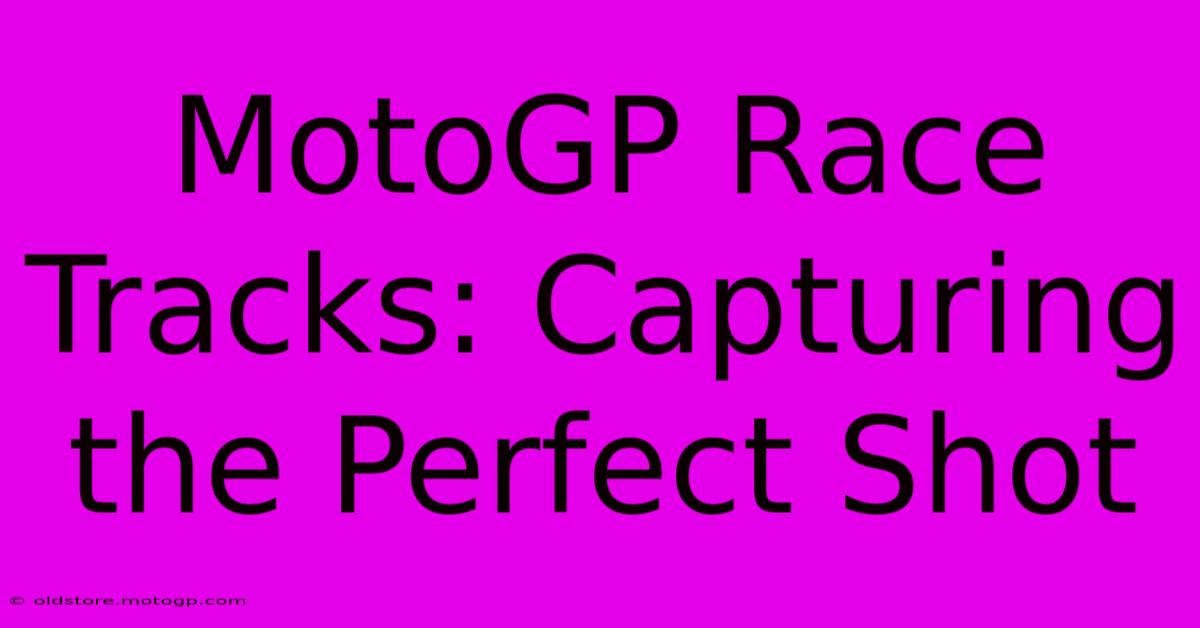MotoGP Race Tracks: Capturing The Perfect Shot

Table of Contents
MotoGP Race Tracks: Capturing the Perfect Shot
MotoGP. The roar of the engines, the smell of burning rubber, the breathtaking speed – it's a sensory overload for fans. But for photographers, it's a challenge and a privilege to capture the electrifying energy of these races. Getting that perfect shot requires more than just pointing and shooting; it's about understanding the environment, the machines, and the moments. This guide will help you capture stunning MotoGP photography.
Understanding the Environment: Location, Location, Location
The beauty of MotoGP photography lies in the diverse race tracks around the world. Each circuit presents unique photographic opportunities:
Iconic Turns & Key Locations:
- Analyze the track map: Before the race, thoroughly study the track map. Identify famous corners known for overtaking maneuvers or dramatic speed changes. These are your prime shooting locations. Corners like Turn 1 at Jerez or the Esses at Mugello often produce unforgettable action shots.
- Consider elevation and background: Higher viewpoints offer panoramic shots, capturing the entire race track and the surrounding landscape. However, lower vantage points offer closer, more intimate perspectives of the riders and their machines. Pay attention to the background; avoid cluttered backgrounds that distract from the main subject.
- Light and Shadows: The time of day dramatically impacts the quality of your photos. Golden hour (sunrise and sunset) offers warm, soft lighting, perfect for creating dramatic images. Midday sun, while bright, can create harsh shadows and wash out details.
Mastering the Technical Aspects: Gear & Settings
Essential Gear:
- High-speed camera: A DSLR or mirrorless camera with a fast continuous shooting mode (at least 7-10 fps) is crucial to capture the speed and action.
- Telephoto lens: A long telephoto lens (at least 200mm, ideally 400mm or longer) is essential to isolate riders and their bikes from the background. A super telephoto lens will allow you to capture incredible detail even from a distance.
- Fast memory cards: You'll be shooting hundreds of images in a short time, so fast memory cards are a must to avoid buffer lag.
- Tripod or monopod: A stable support will help you avoid blurry images, especially when using a telephoto lens. A monopod offers more mobility than a tripod.
- Extra batteries: Shooting continuously will drain your batteries quickly. Bring extra fully charged batteries to avoid missing crucial moments.
Camera Settings:
- Shooting mode: Use continuous shooting mode (burst mode) to capture a sequence of images.
- Aperture: A fast aperture (low f-number, like f/2.8 or f/4) will allow you to capture sharp images even in low light conditions and achieve a shallow depth of field, blurring the background and emphasizing the subject.
- Shutter speed: This is critical! You need a fast shutter speed (at least 1/1000th of a second, preferably faster) to freeze the action and avoid motion blur. Consider increasing your ISO if needed to achieve the required shutter speed.
- ISO: Keep your ISO as low as possible to minimize noise, but don't be afraid to increase it if necessary to achieve a fast enough shutter speed.
- Focus mode: Use continuous autofocus (AI Servo or similar) to track the moving motorcycles and ensure sharp focus throughout the sequence.
Capturing the Moment: Composition & Storytelling
Composition Techniques:
- Rule of thirds: Place the main subject off-center to create a more visually appealing image.
- Leading lines: Use the track itself or other elements in the scene to lead the viewer's eye to the main subject.
- Framing: Use elements in the foreground, like fences or other objects, to frame the action and add depth to your image.
Storytelling through Photography:
Don't just capture the race; capture the story. Look for moments that convey emotion, drama, or the intensity of the competition:
- Overtaking maneuvers: These are always exciting and provide dramatic imagery.
- Rider expressions: Capture the determination, concentration, or frustration on the riders' faces.
- Mechanical details: Showcase the intricate details of the motorcycles, highlighting their powerful engineering.
- Crowd reactions: The energy of the fans can add another layer to your story.
Beyond the Track: Post-Processing & Sharing
Post-processing is essential for enhancing your images. Adjust brightness, contrast, sharpness, and saturation to bring out the best in your shots. Experiment with different editing styles to find your unique photographic voice.
Finally, share your incredible MotoGP photography! Utilize social media platforms, online galleries, and even consider entering photography contests to showcase your talent.
By understanding the environment, mastering the technical aspects, and focusing on storytelling, you can capture truly stunning images that capture the essence of MotoGP. Get out there, practice, and unleash your inner motorsport photographer!

Thank you for visiting our website wich cover about MotoGP Race Tracks: Capturing The Perfect Shot. We hope the information provided has been useful to you. Feel free to contact us if you have any questions or need further assistance. See you next time and dont miss to bookmark.
Featured Posts
-
How Moto Gp Sprintrennen Will Affect Rider Strategy
Feb 22, 2025
-
Lot R Cota The Gold Standard
Feb 22, 2025
-
Circuit Race Training Programs Get In Shape
Feb 22, 2025
-
Austin F1 Transportation Planning Your Perfect Race Weekend
Feb 22, 2025
-
Speed Moto Gp Mastering The Machine
Feb 22, 2025
